Augusta Ada Lady Lovelace (1815 – 1852)
Mathematician and collaborator with Charles Babbage on the development of the forerunner to the computer.
By Claire Jones
Early Life
Table of Contents
Augusta Ada Byron was born on 10 December 1815. She was named after Augusta, Byron’s half sister (who reputedly had been his mistress). Five weeks after Ada was born Lady Byron separated from Lord Byron and found herself in sole charge of Ada. Lady Byron, Anne Isabella Milbanke, had intellectual interests and was herself a gifted mathematician (some sources say that Byron called her his Princess of Parallelograms) and she ensured that Ada received, unusually for a girl, an excellent education. Ada never met her father, who died in Greece in 1823, however he did think about his daughter and addressed the final lines of the third canto of Childe Harold to her.
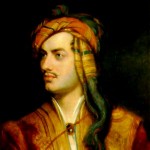
Portrait of Lord byron in Albanian dress by Thomas Phillips (1835) National Portrait Gallery
Lady Byron was keen to ensure that Ada did not grow up to be like her impulsive, poetical father, so she saw to it that Ada received tutoring in mathematics and music, both subjects considered necessary to counter dangerous emotional tendencies. She was introduced to mathematician Mary Somerville at a dinner party when she was a teenager and the older women took Ada under her wing, even tutoring her in mathematics for a while. It was at one of Mrs Somerville’s parties that Ada heard about Charles Babbage’s ideas. Ada married (in 1835) and soon gave birth to three children in quick succession. Ada’s husband, Lord William King, became the Earl of Lovelace in 1838—and Ada became Augusta Ada Lovelace, or A.A.L. as she was to style herself in her writing and mathematical notes.
Collaboration on ‘the first computer’
At the time that he met Ada, Babbage had been busy building a calculating machine which he called the ‘Difference Engine’. He had a model of this, as well as some other mechanical devices, on display in his home in London. Babbage talked to Ada about his preliminary plans for a much more sophisticated machine, which he called the ‘Analytic Engine’. Ada was fascinated by these machines, but she was particularly interested in the plans for the Analytic Engine; what’s more, she immediately understood how these machines could work. Babbage was very impressed with this girl’s quick intellect and grasp of the basic concepts of the calculating machines. In this way began a nine year long collaboration on what has been called the world’s first computer.
Babbage had received government support for the Difference Engine. In 1840, he was invited to lecture on his plans for the analytic engine to a group of scientists at the University of Turin in Italy. It was through this series of lectures that Ada made her contribution to mathematics. These lectures were written-up by a young Italian military engineer, Luigi Menabrea. He published them in French and, in 1843, Ada translated them into English. But (as Somerville did with LaPlace’s work) she did much more than just translate the article. She added her own notes which became more significant, mathematically, than the original article itself. In these notes she outlined the fundamental concepts of computer programming and described the main elements that would be needed in any computer language. Her Notes appeared under the pseudonym A.A.L. in the prestigious journal Taylor’s Scientific Memoirs. These notes are breathtaking in their Ada muses on how the analytic engine, and other similar devices, could be built to accept different types of data which it could then analyse automatically. She also suggested that both numbers and other symbols, such as letters of the alphabet, could be ‘coded’ as numerical data which the engine could analyse and translate into the written word. In this way Ada anticipated future developments such as computer-produced music and images. Ada also conveyed these thoughts in her correspondence with Babbage, suggesting in effect a plan for how the analytical engine might calculate Bernoulli numbers.
Together with the ideas contained in her letters, the Menabrea translation and its accompanying notes was the only work of any importance that Ada produced. Other mathematical projects deteriorated and she later put her mathematical skills to use gambling. Ada’s later interests extended to natural philosophy and from around mid 1844 she began to carry out investigations into the relationship between electricity and life, undertaking experiments at the home of Andrew Crosse (known primarily for his claim in the late 1830s to have produced life, in the form of a rare genus of insect, by running electricity through chemical solutions for long periods). Ada’s ideas, ahead of their time as they may be, are really a footnote in history. Her work remained hidden for a long time and was not used or developed by anyone, so it did not figure in the history of the development of computing. Yet, her plan for calculating Bernoulli numbers is now regarded as the first computer programme and, in celebration, a software language developed by the U.S. Department of Defense was named Ada in her honour in 1979.
Intellectual and social context
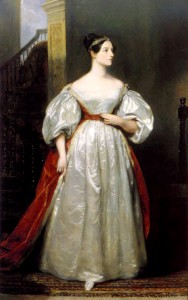
Portrait of Ada Lovelace by Margaret Carpenter (1836)
In Victorian culture, intellectual ambition and achievement of any kind were considered unusual—even inappropriate—in the female sex. Earlier, eighteenth-century culture had produced some opportunities for intellectual women to indulge their passion, most notably the privileged women of the ‘Bluestocking’ salons who met together with male intellectuals to debate and promote the life of the mind from c 1750 onwards. However, idealised Victorian femininity made woman a delicate creature, with a body too weak to sustain intense brain work. Women were expected to confine their ambitions to the domestic sphere—something that made Ada feel frustrated and stifled. Throughout the 1830s and 1840s, as she sought to explore her mathematical powers and become an accomplished mathematician or ‘analyst’, Ada often experienced ill health. Indeed, she came to consider her bodily problems and nervous complaints as a necessary condition or consequence of her intellectual ability.
From Ada’s infancy, Lady Byron intended her education to cleanse her of any hint of ‘Byronic passions’; she wrote in her personal journal about how she might reinforce intellectual strength in her daughter and annihilate every ‘delusion of Imagination’. Central to her plan was a rigorous course in mathematics., rather than sciences such as botany which were more conventional for a young lady. This programme redoubled after 1833, when Ada attempted to elope with a tutor. To her mother, mathematics seemed an activity which ‘cannot possibly lead to objectionable thoughts’.
On her marriage, Ada’s intellectual life developed rapidly. As well as Mary Somerville, she was tutored by Augustus de Morgan, a respected mathematics professor at University College London (and the founder of the important London Mathematical Society). In letters to Ada’s mother, de Morgan expressed his high estimation of Ada’s intellectual powers, but also his worry that encouraging her to develop them might compromise her health. He felt that she was more able than Mary Somerville because she was original and capable of going back to first principles. Her ability was ‘utterly out of the common way for any beginner, man or women’. But he advised that she should not be told this, because her body was too weak to sustain her mental effort if she was motivated to pursue that path even more.
De Morgan was a progressive amongst mathematician in his support for women’s education, but his view demonstrates how deeply held and widespread was the conviction that masculine physical strength was essential to underpin mathematical and other intellectual labour:
All women who have published mathematics hitherto have shown knowledge, & the power of getting it (but few have) …. Wrestled with the difficulties and shown a man’s strength in getting over them. The reason is obvious: the very great tension which they require is beyond the strength of a woman’s physical power of application. Lady L. has unquestionably as much power as would require all the strength of a man’s constitution to bear the fatigue of thought to which it will unquestionably lead her.
Reconciling femininity and mathematics
It is significant that Ada saw her femininity as something that needed consideration in the light of her mathematical skill and ambition. She tried to reconcile the two—often referring to herself as the ‘Bride of Science’—but her strategy to do so was very different to Mary Somerville’s. Whereas Somerville’s modus operandi was ‘humility’, Ada preferred the opposite. In her letters to Babbage she referred to herself as a magical or ethereal being and he followed suit. Their correspondence spoke of her as a ‘fairy’, a ‘high Priestess’ and an ‘Enchantress of Number’. Was this a representation of intellectual capacity that allowed her to retain her femininity as it turned her into some kind of goddess or muse of science?
In the end Ada tried Babbage’s patience by asserting that he was in need of her special mathematical intuition and guidance. At this time Ada was dallying with mesmerism and considered whether she may be a channel for a higher force. Mesmerism, an early form of hypnosis, was very popular in the 1830s and 1840s; travelling showmen/scientists performed at country houses to entertain and inform at dinner parties and other events. Eventually, Babbage withdrew from collaborating with Ada, although they did remain friends.
Early death
Ada’s Byronic passions turned from mathematics to extramarital affairs; she was increasingly unhappy and was accused of neglecting her three children and husband. Her health declined rapidly and doctors were perplexed; Ada suffered a range of harsh and unpleasant medical treatments but to no effect. She died, aged thirty seven, in 1852 from what now is thought to have been a uterine tumour. In her obituary in the Times no reference is made to her intellectual work.
Suggested biography: Benjamin Woolley, The Bride of Science: Romance, Reason and Byron’s Daughter![]() , Macmillan, 1999.
, Macmillan, 1999.




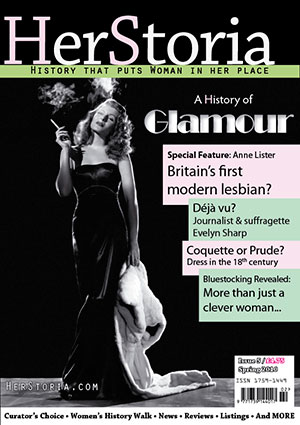
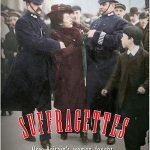
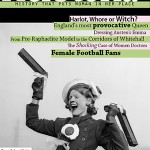
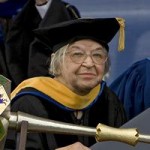
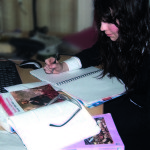
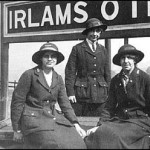
Leave a Reply